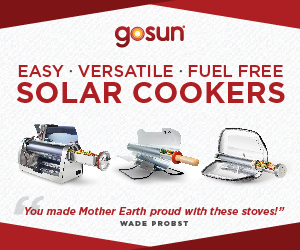- HOME
- Food Storage Recipes
- Freeze Dried Pre-made Meals
Complete Freeze Dried Pre-Made Meals? Or Individual Products?
Complete Meals or Individual Cans?
Should I buy complete pre-made meals or individual cans of fruits, vegetables and meats? Why or why not?
It's up to you, of course, but if you choose to buy complete meals, be sure and taste-test them before investing money in many cans of a particular food. Some websites offer free or inexpensive samples, or just order one can to try.
Invest in emergency food storage now and enjoy peace of mind for the next 25 years. Don't miss out on the savings!
First, let's talk about pre-made meals.
These meals have cooked ingredients assembled in a factory according to their recipes. They may be mostly noodles/rice, a sauce and spices, and maybe some vegetables. Others may include a meat choice of chicken or beef. If all the ingredients are freeze dried products, you will add boiling water and wait for the food to absorb the water and soften. Others may require simmering.
One such Entrée for instance, a Chicken Teriyaki from Valley Food Storage requires 5 cups of water. Bring to a boil then whisk in package contents. Turn down to a gentle boil for 10-15 minutes or until noodles are soft. Remove from heat and let stand for 5-7 minutes. (Many of their pre-made meals have dehydrated foods rather than freeze dried so they require longer cooking, which doesn't make them any less tasty. I have found them to be excellent Entrée's with no preservatives, fillers or additives.)
Pre-Made Meals are perfect for those busy times when you need a meal fast without going to a fast-food restaurant. It is healthier and cheaper too.
There are also many kinds of pre-made mixes such as soup bases, brownie mixes, and pancake mixes. (These are just as good or better than you can purchase in the grocery store.) Some may require an added ingredient, while others (soup bases) are quick and hearty meals if you add some meat and vegetables.
Not all pre-made meals are free of preservatives, fillers or additives. It depends on which company you purchase from. I suggest that you always read the ingredient label (ask them for an ingredient list if it is not listed on their website.)
So here's my preference on this subject:
I have some complete meals in my storage. They're okay and some are exceptionally good. But I've read the labels and, frankly, I'd rather put together my own combinations of vegetables, meats, spices, and sauces, because then I know exactly what's in the meals I fix for my family. No preservatives, no fillers, and no ingredients that may cause an allergic reaction to anyone who might be sensitive to those ingredients.
So now when I buy any long term food supplies, I choose the cans, buckets, or pouches that contain nothing but a single product of meat, fruit, or vegetables.
What can I do with these individual food products to make a complete meal?
I took a careful look at my favorite recipes. Scanning each ingredient, I made a note about which ingredients could be substituted with a freeze dried, dehydrated, or a canned product — as opposed to fresh.
Nearly all of the recipes I checked could, indeed, be converted to a shelf-stable version of fresh.
So . . .
How do I substitute these foods into my regular recipes and menus? Will they taste the same?
I know — that's two questions, but they are definitely related. I began with writing down the substitutions right next to each fresh ingredient in my recipes.
I have lost count of the number of times I have been asked these questions,
- How do I actually use a dry ingredient?
- If I need 1 cup of fresh, how much of the dry do I use?
- How long do the dry ingredients need to cook?
- Can I just eat the dry ingredients right out of the can?
So let's answer those questions.
Using a dry ingredient for the most part is very simple. Rehydrate it by covering with warm or boiling water and let it sit until it has become soft. Then, use the product like you would a canned or frozen product in any of your recipes.
How much of the dry ingredients should I use?
Keep in mind that if you are using dehydrated ingredients, the food will get much larger in size and you could have a very hearty soup without realizing it! Start with small amounts and add more as needed.
If you are using freeze dried products, the pieces are about the same size as fresh foods; so if your recipe calls for 1 cup of fresh, use 1 cup of freeze dried.
How long do the dry ingredients need to cook?
If you're going to throw some dry foods INTO your soup, you'll need to add a couple minutes or so to accommodate the rehydration process. If you are rehydrating them before, there’s no extra time needed. Because freeze dried foods come pre-cooked, this makes a great shortcut for casseroles and soups.
Can I just eat the dry ingredients right out of the can?
Freeze dried foods such as meats, fruits, vegetables, and even cheese are pre-cooked, so you can actually eat them dry as as a snack. However, most people prefer the meats and cheeses in recipes. But the fruits and vegetables are delicious for snacking right out of the package. The fruits especially, are great in trail mixes or throw some in a baggie for a healthy snacks to your child's lunch box. (They will LOVE yogurt bites or yogurt melts.)















